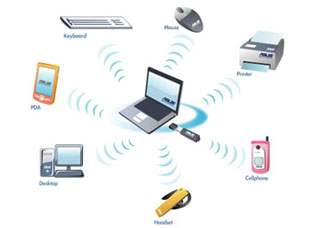Wireless Technology
Internet speeds are getting higher and faster everyday with the advancement of wireless technology. Knowing the different technologies working behind wireless internet services is essential in getting wireless internet access wherever you may be.
Advancement in wireless technology has given a new face on the way individuals connect and get work things done online. And while people are getting busier, wireless internet allows them to connect online even while having an afternoon tea at their favorite coffee shop, or while in the car or while traveling.
Types of Wireless Technology
Here are some of the technologies used for wireless internet access.
- 3G network (third generation network)
This is the innovation from 2G network featuring improved network capacity, more extensive services, higher transfer speeds and spectral implementation. 3G network is capable of supporting full-motion video and music streaming, faster internet browsing, 3G gaming and improved security. Technologies such as CDMA and EDGE fall under 3G networks.
- Wi-Fi (Wireless Fidelity)
Wi-Fi is a type of technology that utilizes high frequency radio signals operating on a hundred feet in between two data transmission hubs. Wi-Fi can deliver data transfer of up to 54Mbps and is also used in making WLAN (wireless local area networks). They are fairly affordable and are found mostly in public areas such as cafes, restaurants, railway stations, bars and airports.
- 4G network (fourth generation network)
This is distinguished from the preceding generation to provide higher data transfer speeds and enhanced audio quality. 4G network supports mobile television, digital video broadcasting, real-time audio, high-def television and video chat. Technologies like UMB, 3GPPLTE and WiMAX are identified to be using 4G network.
- WiMAX (Worldwide Interoperability for Microwave Access)
WiMAx technology transmits data at broadband speeds while on the move. Working on 4G technology, it provides faster internet speeds among other broadband technologies like cable and DSL. Downloading large files, video streaming and chatting while on the road is possible with WiMAX. Its coverage area extends miles, hence covering whole cities.
- LTE (Long Term Evolution)
LTE is also running on 4G technology and is expected to surpass WiMAX speeds. It is designed to boost data transfer rates and bandwidth capacity to facilitate better performance and mobile implementations.
Wireless technology used by Internet Service Providers in the US
- AT&T
AT&T provides comprehensive 3G coverage and currently offers 4G HSPA+ wireless service which is four times faster than their 3G network. In addition, AT&T is renowned for having largest Wi-Fi hotspots worldwide.
- Verizon
They are famed for giving the widest and strongest 3G (HSPA) coverage across America. Although they don’t offer 4G service, Verizon will be launching their 4G LTE network which is expected to give greater heights as far as high-speed internet is concerned.
- T-Mobile
This company provides good coverage of 3G network nationwide but as other giants are upgrading their technology, T-Mobile seems to fall behind. However, their current tie up with AT&T with its upcoming launch of 4G LTE enables T-Mobile to gain momentum in the wireless service.
- CLEAR
They are behind the creation of WiMAX technology and provide excellent 4G service across the US. Its partnership with Sprint gives CLEAR the chance to extend its services to the mobile phone service.
Knowing the wireless technology being used today gives you a better understanding of the wireless services offered by wireless service providers.

